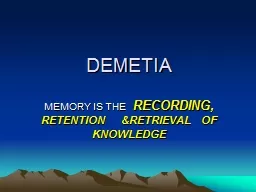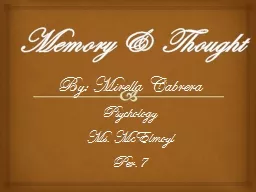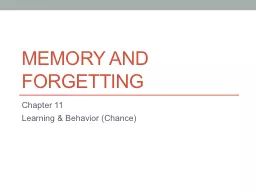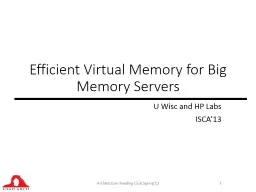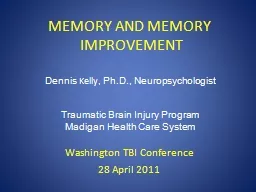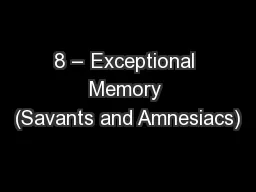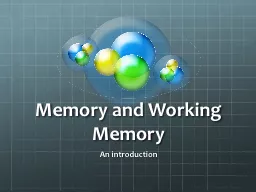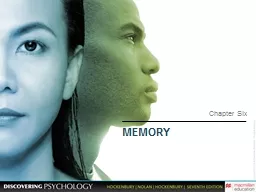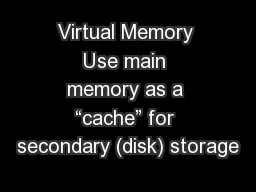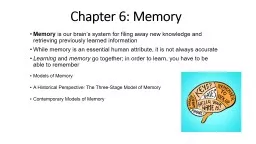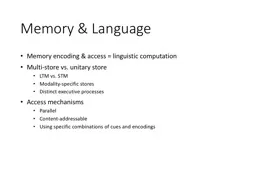PPT-DEMETIA MEMORY IS THE
Author : amelia | Published Date : 2022-02-14
RECORDING RETENTION ampRETRIEVAL OF KNOWLEDGE DISORDER OF MEMORY DEMENTIA acquired and persistent compromise in multiple cognitive domains that is severe enough
Presentation Embed Code
Download Presentation
Download Presentation The PPT/PDF document "DEMETIA MEMORY IS THE" is the property of its rightful owner. Permission is granted to download and print the materials on this website for personal, non-commercial use only, and to display it on your personal computer provided you do not modify the materials and that you retain all copyright notices contained in the materials. By downloading content from our website, you accept the terms of this agreement.
DEMETIA MEMORY IS THE: Transcript
Download Rules Of Document
"DEMETIA MEMORY IS THE"The content belongs to its owner. You may download and print it for personal use, without modification, and keep all copyright notices. By downloading, you agree to these terms.
Related Documents

